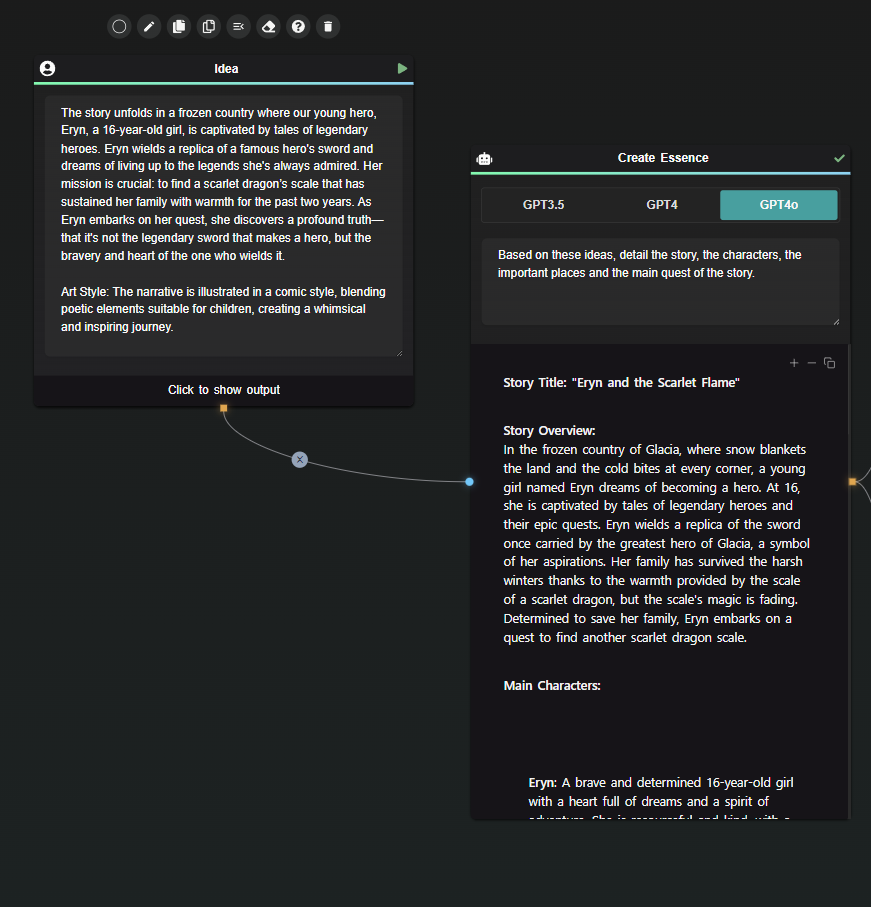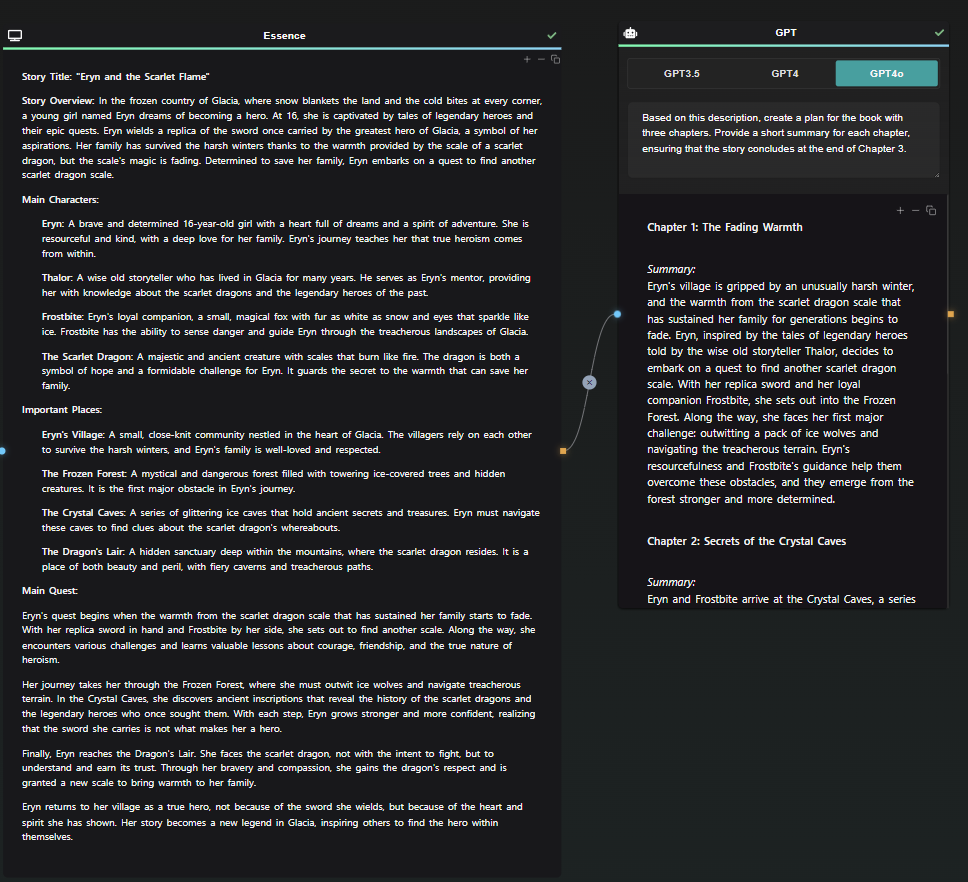How to Automate Story Generation Using AI-FLOW - Part 1
This guide aims to provide insights into automating the generation of a full short story using AI. The objective is to generate a coherent and compelling story, complete with engaging visuals. The ultimate goal is to achieve this in one click after setting up the initial workflow.
To clarify, this guide is not intended to promote mass production of AI powered stories but rather to offer a method to help visualize and inspire you during your creative process.
Initializing the Story
Begin with a basic concept of the story you want to create:
- Who is the main character?
- Does the main character have a sidekick, pet, or companion?
- Where does the story take place?
- What are the key concepts or events in your story?
- What is the art style?
- Who is the target audience?
Adding your personal touch to the story is crucial. You can choose to generate these ideas with AI, but if your prompt is too simple, the result may be a generic story.
I will keep it simple for the example, but you may need something more elaborated, here's my prompt:
The story unfolds in a frozen country where our young hero, Eryn, a 16-year-old girl, is inspired by her late father's heroism. Eryn wields his cherished sword, dreaming of living up to his legacy. Her mission is crucial: to find a scarlet dragon’s scale that has sustained her family with warmth for the past two years. As Eryn embarks on her quest, she discovers a profound truth—that true heroism lies not in the legendary sword but in the bravery and heart of the one who wields it.
Art Style: The narrative is illustrated in a digital painting style, blending poetic elements suitable for children, creating a whimsical and inspiring journey.
Elaborating the Universe with AI
Using your inputs, ask the AI to connect all the elements and develop the universe and story into a simple summary. The goal is to capture the "essence" of the story.
Here’s a sample prompt you can use:
Based on these ideas, detail the story, characters, important locations, and the main quest.

Structuring Your Story
Using the essence of your story, ask the AI to create a simple plan. For a short story, you might request three chapters. Each chapter should have a title and a brief summary.
Here's an example prompt:
Based on this description, create a plan for the book with three chapters. Provide a short summary for each chapter, ensuring that the story concludes at the end of Chapter 3.

The first node here is just a Display Node used to show the essence of the story.
Creating the Cover for Your Story
Using the essence, create a visual prompt for the story's cover. Ask GPT to refine the essence into a visual prompt that considers the chosen art style. Then, use tools like Stable Diffusion 3 or DALL-E to generate the image. If the result isn't satisfactory, re-run the image generation. If necessary, regenerate the prompt and try again.
Here’s a sample prompt for DALL-E:
Based on this story, create a visual prompt for DALL-E representing an ideal cover for this story.

Here is the resulting cover!
For this example, I used both DALL-E 3 and Stable Diffusion 3 to compare. DALL-E produced a cover with a strong art style and a solid title reminiscent of children’s stories. Stable Diffusion 3 created a more realistic, teenager-appropriate illustration. The outcome depends on how you instruct GPT to build your prompt. In a real scenario, you’ll need to tweak your prompt and regenerate the image multiple times to achieve convincing results.
N.B : DALL-E 3 improves each of your prompts in the background.
In the next article, we will explore how to build a chapter and create associated images!
You can try AI-FLOW now!